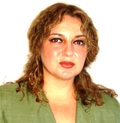Dear all,
Just an add-on to the very good comments below:
When thinking about past policies of the World Bank, the new approach going “universal” and supporting UHC is surely welcome. It refers to mental health – a topic rarely highlighted by the Bank - and household impoverishment arising from private health expenditure. So far, so good.
But what means UHC for the WB? Who and what is covered? Checking out the latest documents on this topic (http://www.who.int/healthinfo/country_monitoring_evaluation/UHC_WBG_DiscussionPaper_Dec2013.pdf) is rather disillusioning: You might assume that the meaning of “universal coverage” is that all people in a country have access to needed services…“ However, the targets set for 2030 by the authors of the paper are that 80 % of the poorest 40 % of the population have coverage to ensure access to essential services… What about the remaining poor, close to poor and low income populations? Is this equity? Further, so called essential services that will be traced are limited to the few MDG-related services and services related to chronic conditions and injuries: what about all the other diseases that kill people and stop them from working? Is this the concept what we wanted to see when discussing universal health coverage?
Xenia Scheil-Adlung
Health Policy Coordinator
Social Protection Department
International Labour Organization
4, rte. des Morillons
CH-1211 Geneva 22
Tel: +41 22 799 6612
Fax: +41 22 799 7962
[email protected]
Just an add-on to the very good comments below:
When thinking about past policies of the World Bank, the new approach going “universal” and supporting UHC is surely welcome. It refers to mental health – a topic rarely highlighted by the Bank - and household impoverishment arising from private health expenditure. So far, so good.
But what means UHC for the WB? Who and what is covered? Checking out the latest documents on this topic (http://www.who.int/healthinfo/country_monitoring_evaluation/UHC_WBG_DiscussionPaper_Dec2013.pdf) is rather disillusioning: You might assume that the meaning of “universal coverage” is that all people in a country have access to needed services…“ However, the targets set for 2030 by the authors of the paper are that 80 % of the poorest 40 % of the population have coverage to ensure access to essential services… What about the remaining poor, close to poor and low income populations? Is this equity? Further, so called essential services that will be traced are limited to the few MDG-related services and services related to chronic conditions and injuries: what about all the other diseases that kill people and stop them from working? Is this the concept what we wanted to see when discussing universal health coverage?
Xenia Scheil-Adlung
Health Policy Coordinator
Social Protection Department
International Labour Organization
4, rte. des Morillons
CH-1211 Geneva 22
Tel: +41 22 799 6612
Fax: +41 22 799 7962
[email protected]

